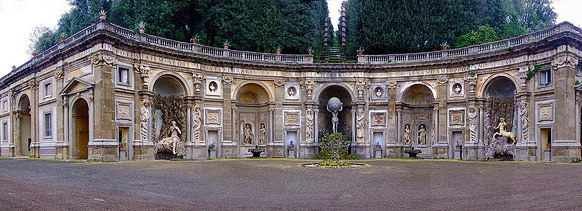BRUTALIST.
It is an aspect of the International Style of architecture that demanded a functional approach to architectural design. It advocated a return to the functionalist principles (both services and materials and structure).
This is characterized by the construction of monumental sculptural forms with cold materials such as reinforced concrete. Hence its name Brutalism, which opposes the use of glass and steel used by Mies van der Rohe.
The name was applied to the architecture of Le Corbusier, who was in later years to 1930.
The buildings constructed at this time, rejected the refinement and elegance. The structural elements like steel beams and concrete slabs were visible (bare material) conferred an austere and rigid linearity.


Both structures are settled in Yugoslavia.

Robarts Library in Toronto, Canada. Institute of Education in London.
GOTHIC.
It's an architectural style that took inspiration from Medieval architecture. It flourished in Europe from the XII to the XVI century. Its generator principle was in the Gothic structure (arcs with tip) of the dome: founded on the principle of the vault or ribbed edges.
The Gothic vault was born of the need to increase the height of the ships and reduce the thrust of the vaults and better weight distribution. These results were obtained with the use of buttresses and truncated domes. With the passage of time were giving some changes such as decreased window width, predominance of horizontal, etc.


Reims Cathedral, France. Oudenaarde Town Hall, Belgium.


Church of San Pablo, Spain. The Palazzo Pubblico in Siena, Italy.
RENAISSANCE.
It's characterized by the renewal of the ancient doctrines, manifested in Italy in the late Middle Ages and from there spread to Spain and France. Its heyday was in the XVI century.
Emerges from the interest in classical learning and values. The Greek and Roman world was discovered.
The Renaissance witnessed major changes in the world as the discovery of new continents, the emerge of trade, the invention of paper, printing and gunpowder.

Residential Building in Italy.
MANNERIST.
Is a term applied to certain aspects of an artistic style, mainly Italian, in the period between the High Renaissance of the XVI century (1520) and the beginnings of Baroque art of the XVII century (1590). This style originated in Florence and Rome, then spread to northern Italy and from there to Europe.
The resulting tension of the confrontation between Christianity and humanism, resulted in this style that reneged on the early Renaissance. Instead of being clear, harmonious and restful; It was characterized by extreme complexity and sophistication.
The Mannerist style was characterized by artificiality, a conscience for the cultivation of elegance and technical ease. They are seeking refinement of form and concept, taking exaggeration and contrast to unexpected limits. This resulted in an irrational mix of classical motifs and other references to the ancient.

Aldobrandini Ville, Italy.

Palazzo Chierati, Italy.
Now this is a complementary video about the architecture in the early XX's.
No hay comentarios.:
Publicar un comentario